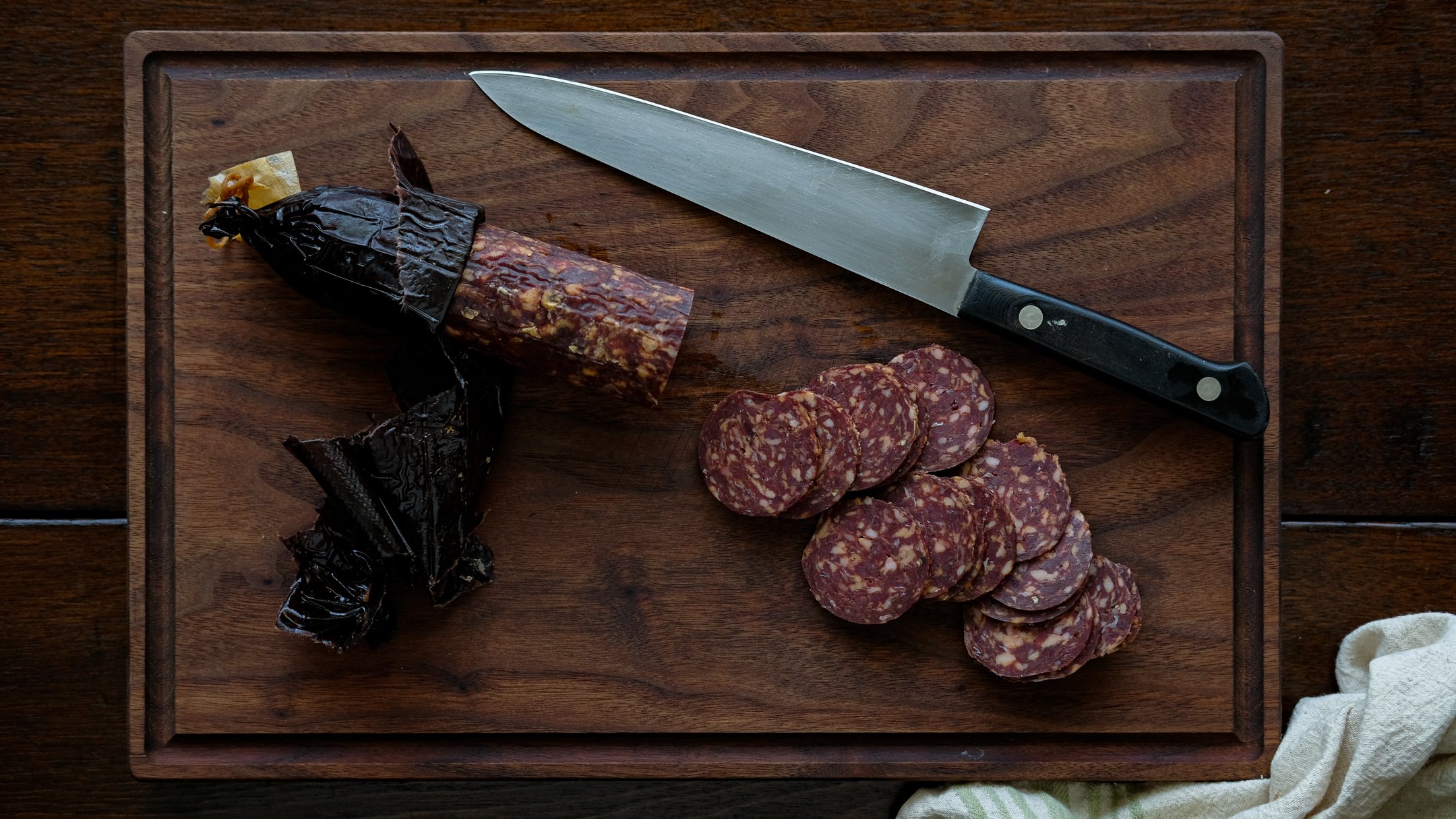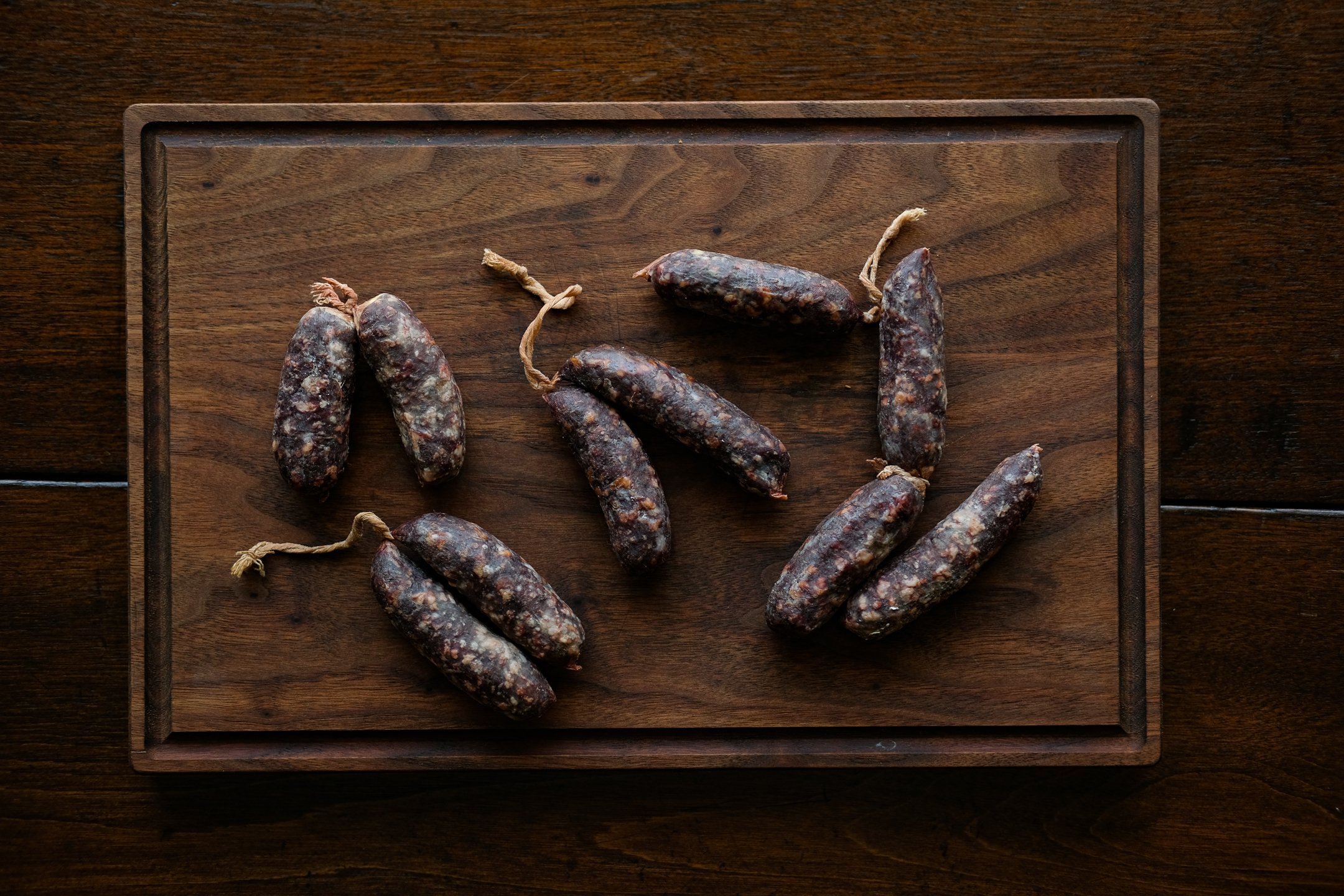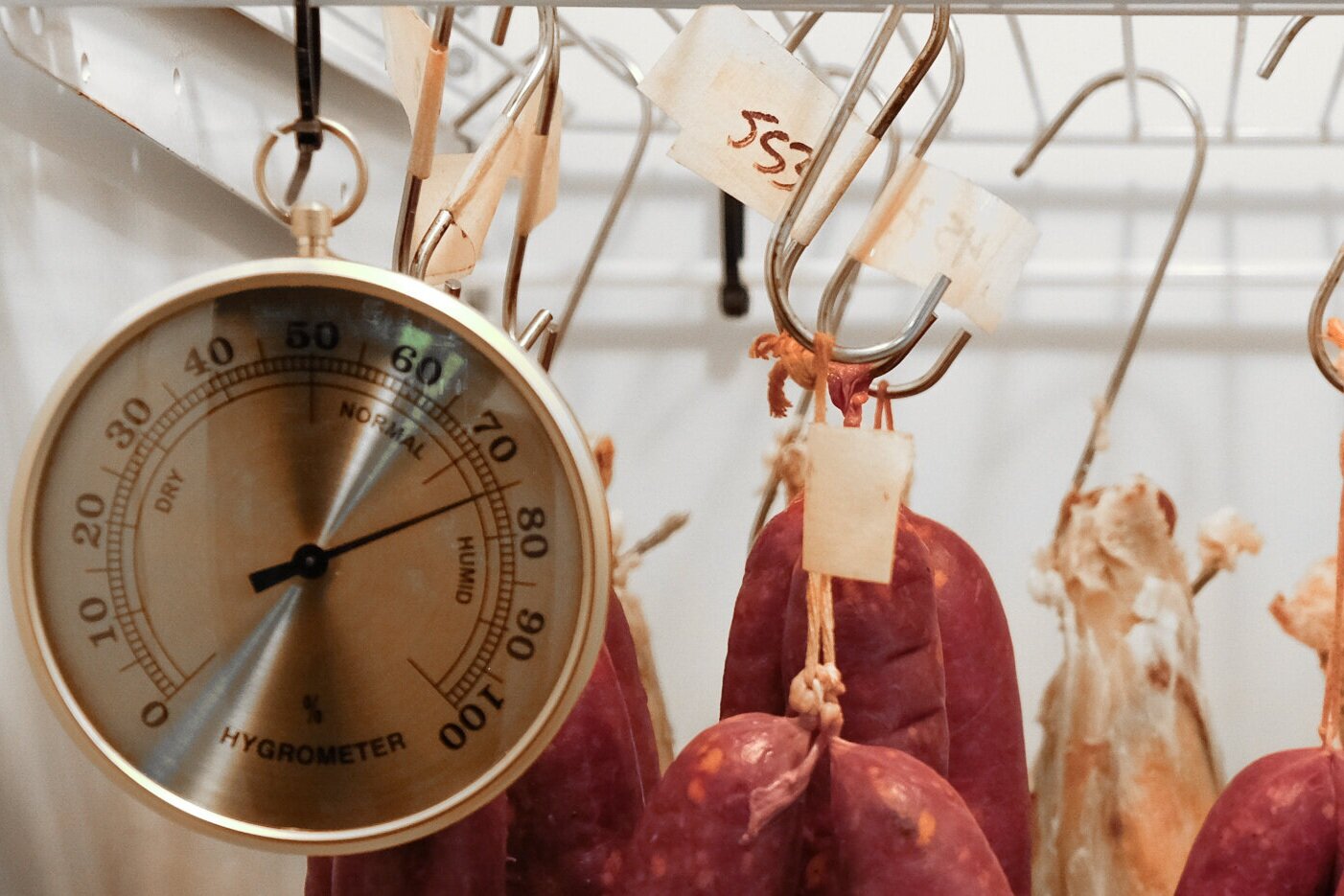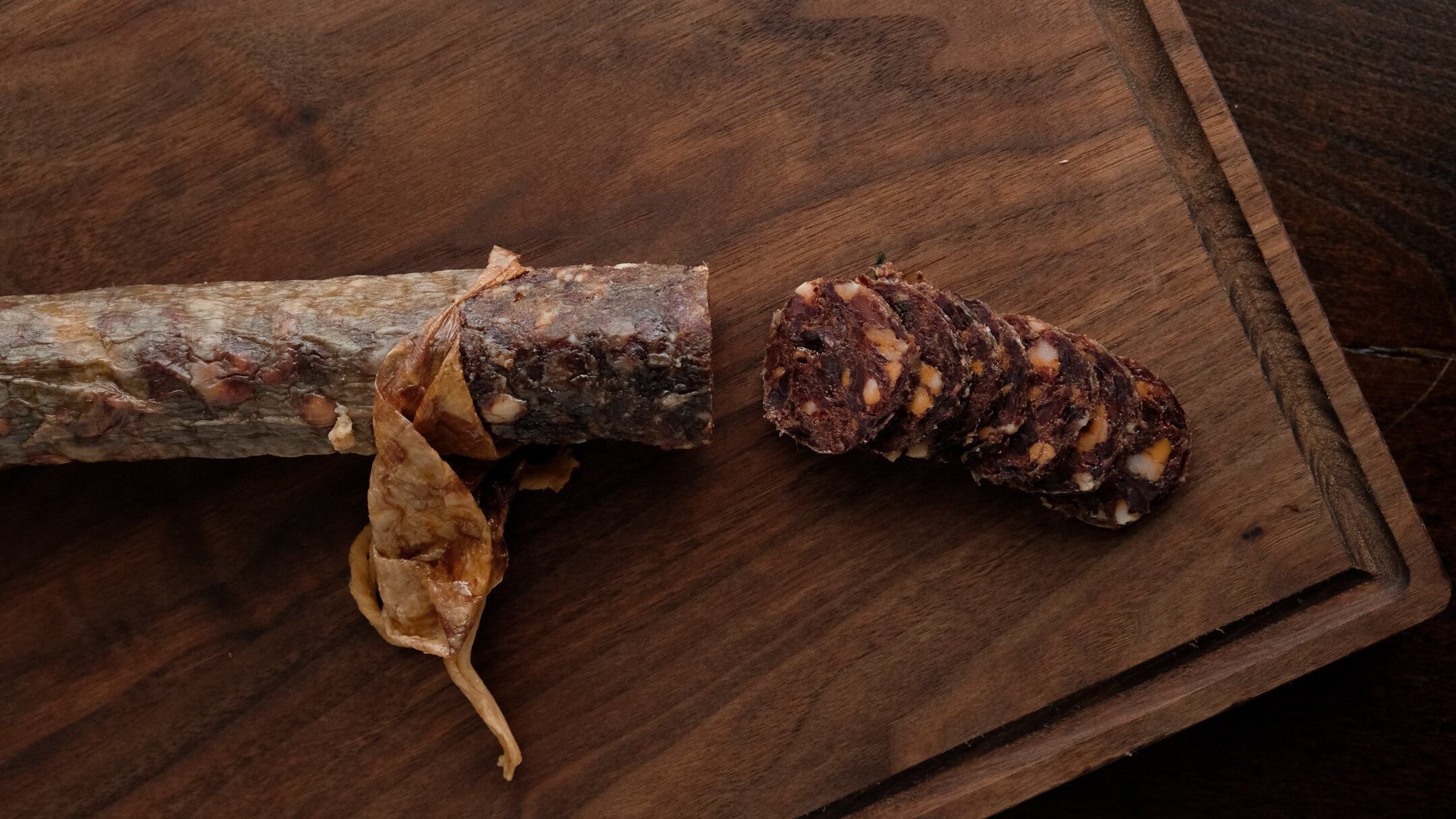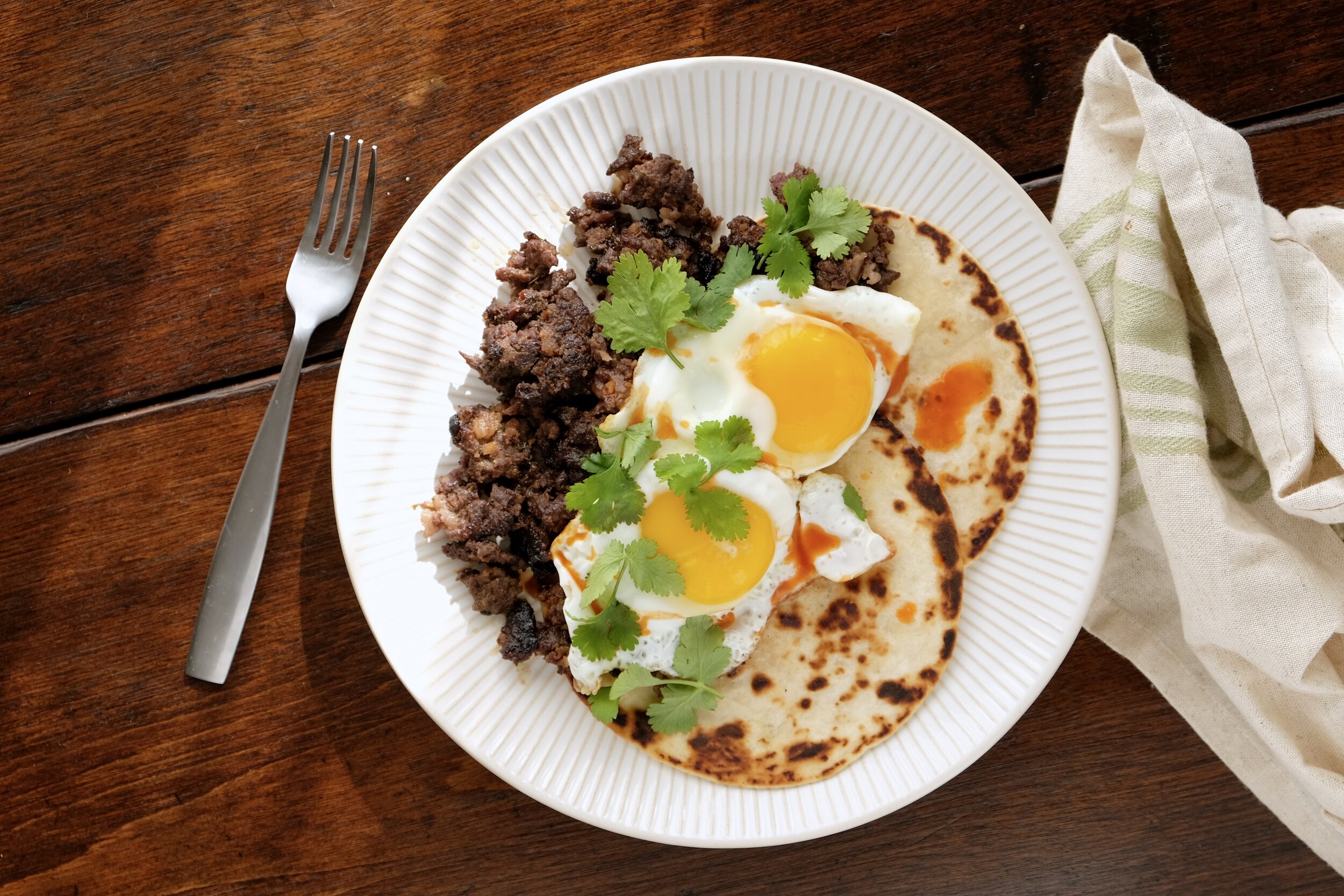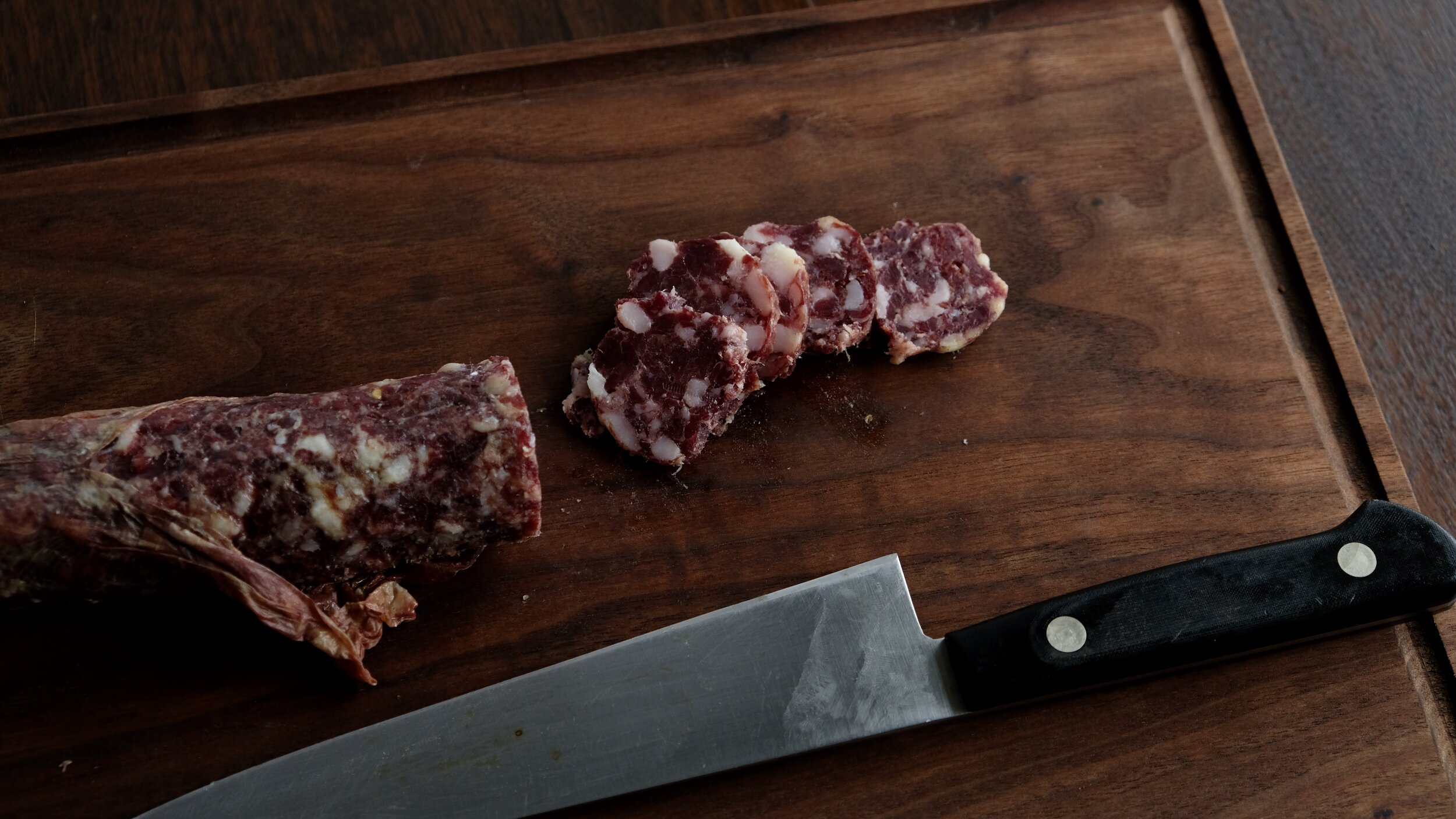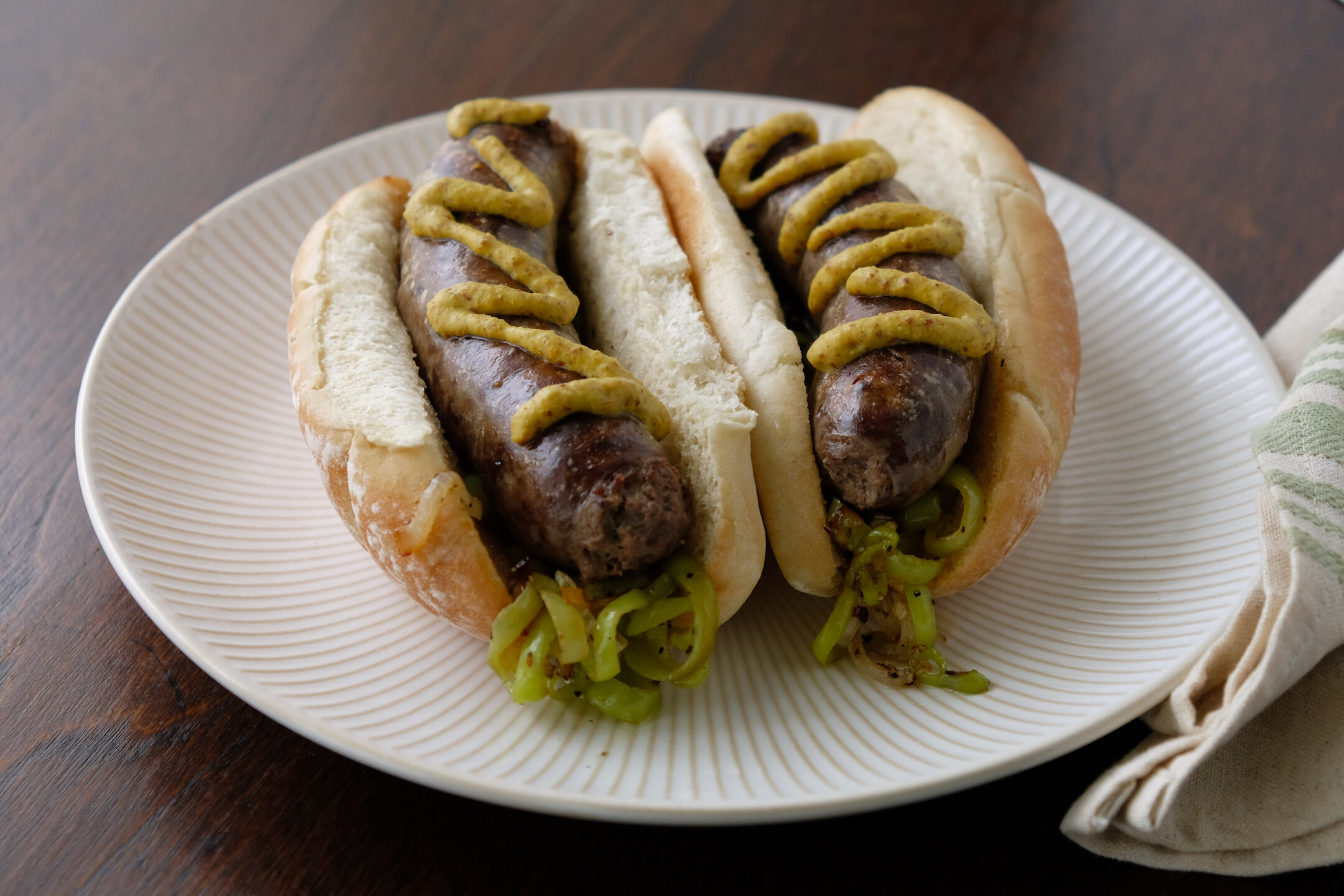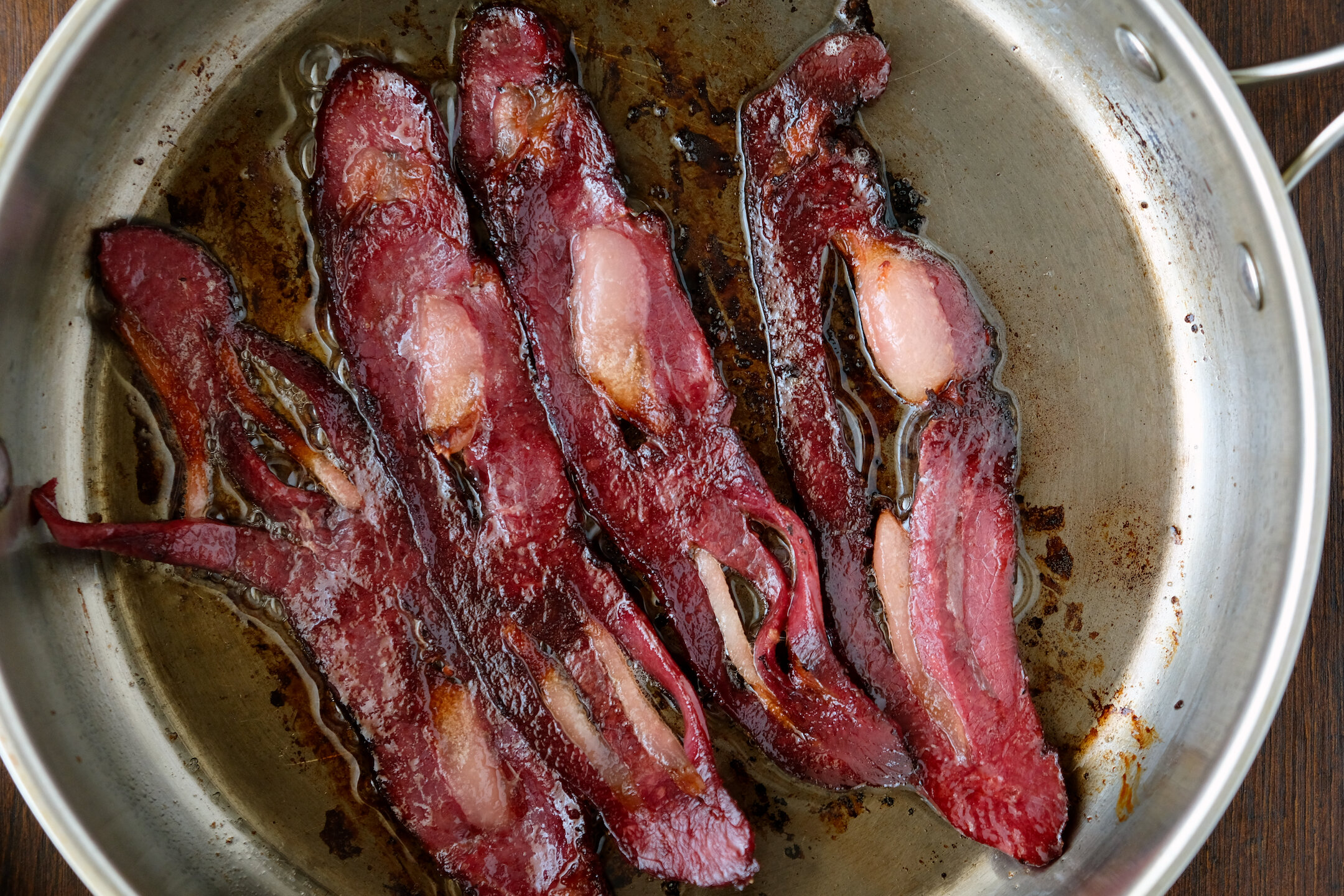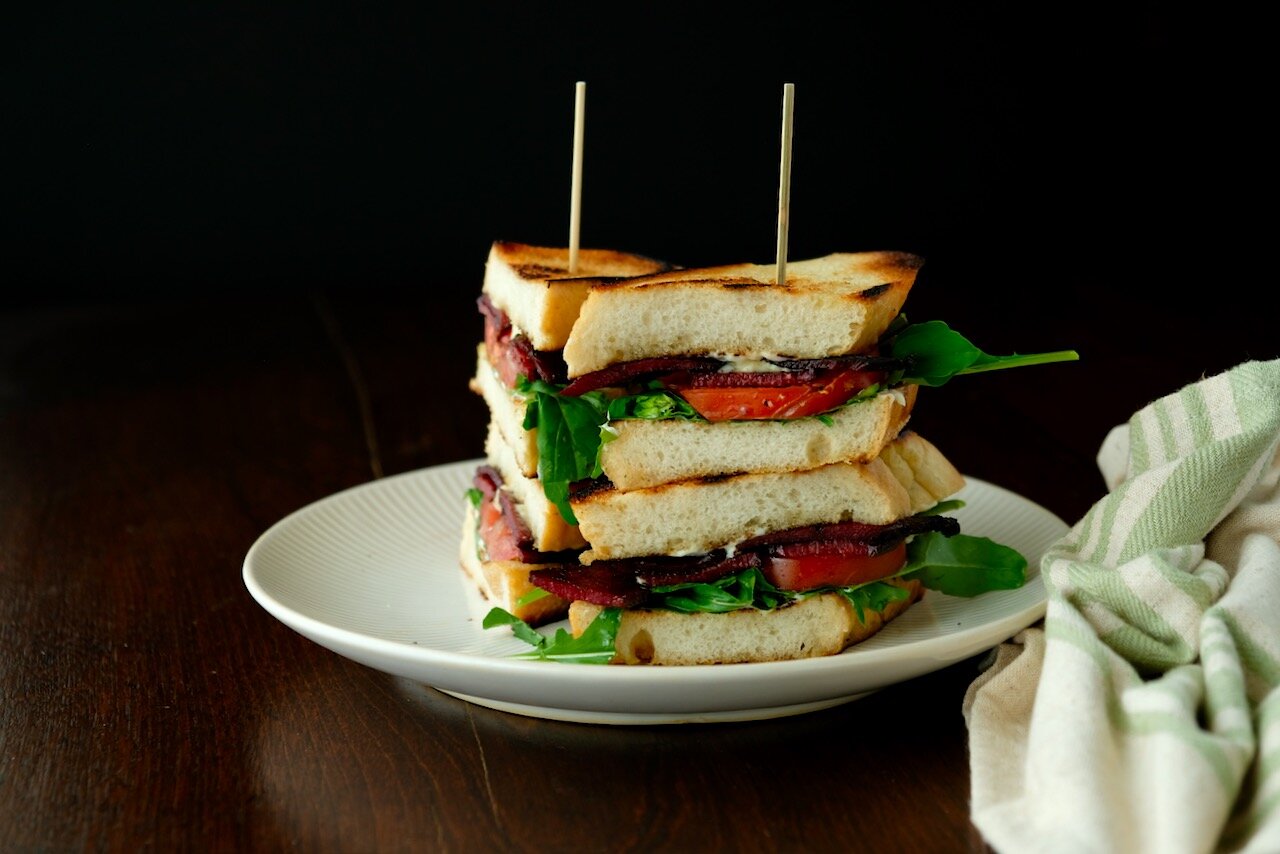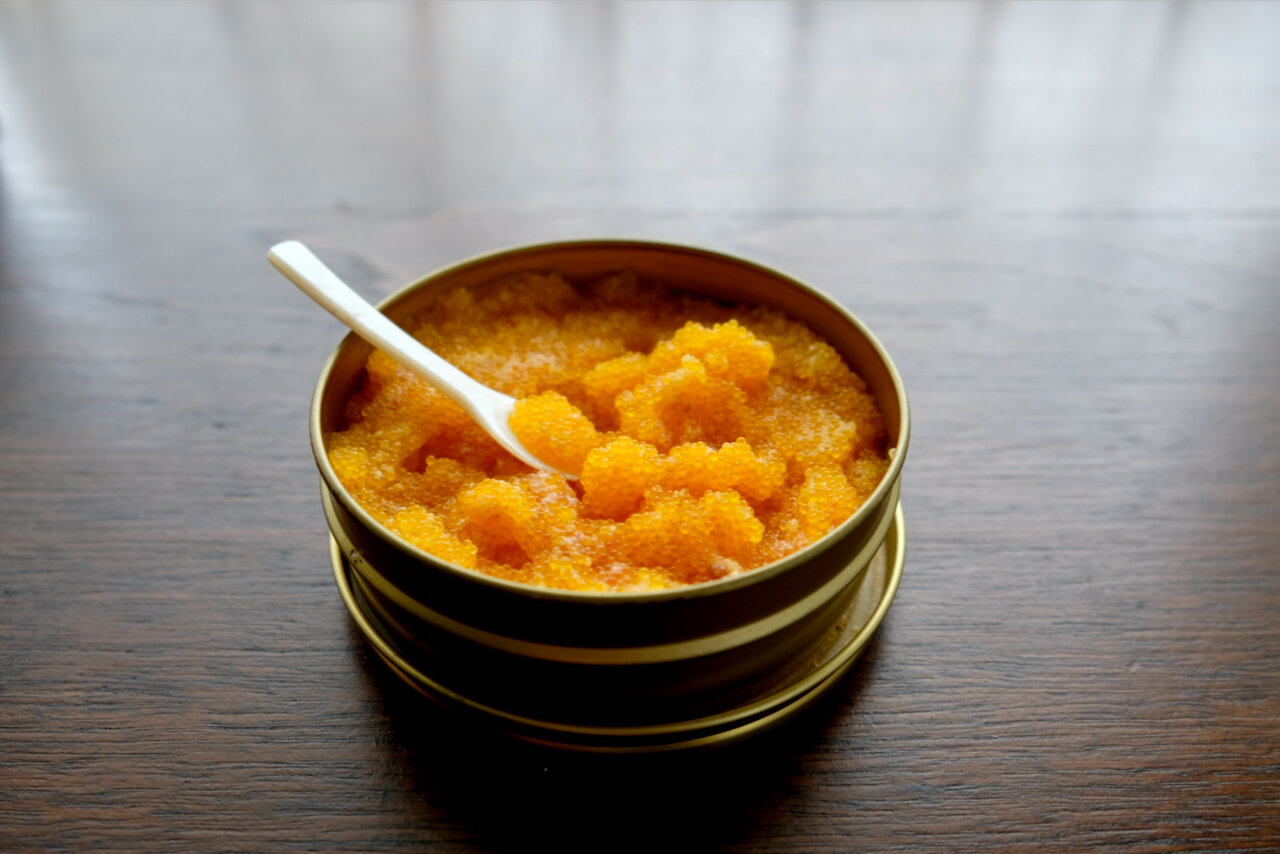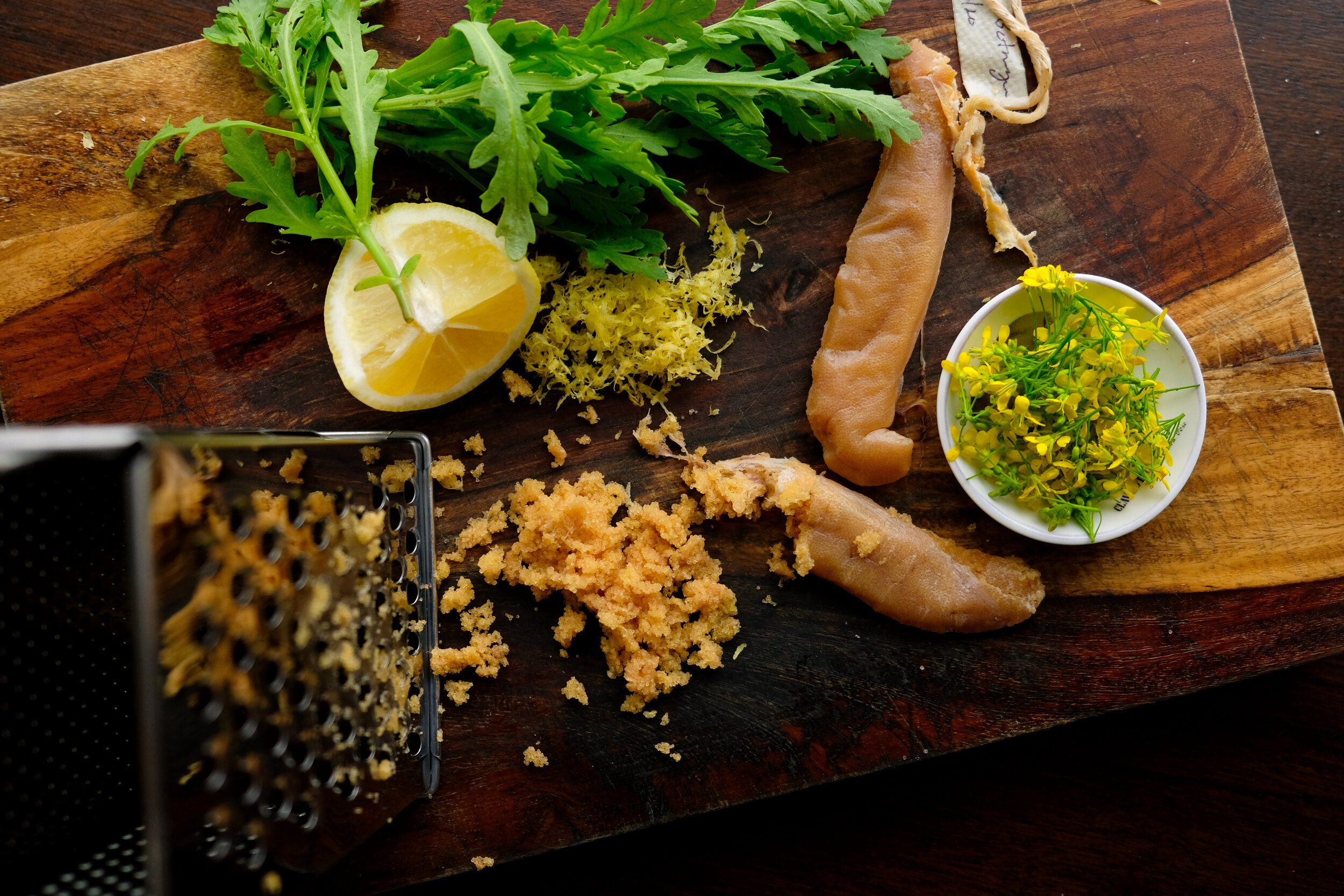Duck Proscuitto


This might be the simplest charcuterie of all- the only two required ingredients are the meat and salt. The additional seasoning is optional. Experiment! The only tricky part is finding a good place to hang and age it.
You can go low tech- a cool, slightly damp basement or closet will do. Ideally, you’ll have somewhere around 70% humidity, and a temperature between 50-60 degrees. You can purchase a combination hygrometer & thermometer to help you select the right area of your home for curing.
If your house is pretty uniformly warm and dry (lucky you!) you can rig up a curing chamber with an old fridge, thermo controller, and a reusable silica based dehumidifier. If you have the ability to control the humidity in your curing chamber, you can gradually decrease the humidity as the meat cures to allow it to dry out and concentrate the flavors.
Duck or Goose Proscuitto
Prep time: 30 minutes active
Ingredients
Duck or goose breasts, skin-on
Salt
White pepper, ground
Cheesecloth
Butchers twine

Method
Spread a layer of salt ¼ inch deep in a container with sides. Pat the breasts dry and lay them on top of the salt, then apply a generous layer of salt to the top side. Make sure the breasts are completely covered with salt. Cover with a lid or plastic wrap and refrigerate for 24 hours.
Remove breasts from salt, rinse with cold water and pat dry. The meat should feel firmer and have darkened in color. Season with white pepper (a light dusting will do), wrap in cheesecloth and tie off the ends with twine. Hang from a rack in curing chamber or in a dark, cool, humid space. The ideal temperature is between 50-60F. Hang for a week and then unwrap it to check.

The breast should have further darkened in color and begun to dry out. If you see a little white mold coating the exterior, don’t worry. You can wipe it with a cloth dampened with vinegar to remove the bloom, or just leave it alone. This process is pretty foolproof, but if you do see black mold or smell ammonia, don’t try to salvage it- start over.
Slice a small, thin piece off the end and do a taste test. After a week, the meat should have firmed up and have a slightly leathery texture, but because of variation in humidity and temperature, yours may be softer or tougher. At this point, it is a matter of preference- if you’d like to continue curing the proscuitto for a firmer texture and more concentrated, funky flavor, go ahead and re-wrap and hang. Continue curing and periodically tasting. We like a drier, funkier charcuterie, so we hang mallard breasts for 4-6 weeks, goose breasts for 6-8. Your curing conditions and palate will differ.






